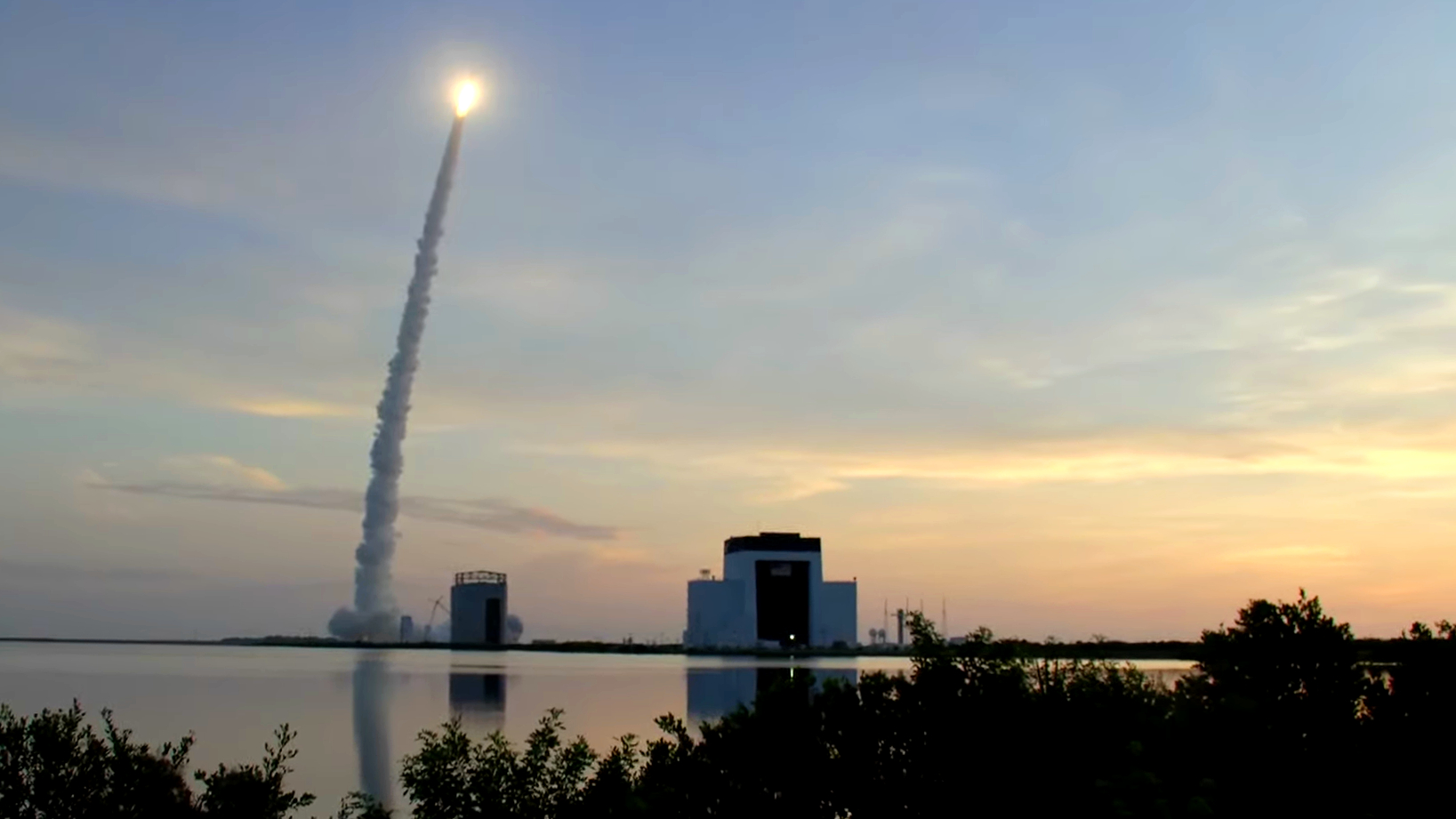Atlas V rocket launches its final national security mission for US military (video)
United Launch Alliance's (ULA) venerable Atlas V rocket flew its final national security mission on Tuesday morning (July 30).
The Atlas V launched from Florida's Canaveral Space Force Station on Tuesday at 6:45 a.m. EDT (1045 GMT), on a classified mission for the U.S. Space Force called USSF-51.
USSF-51 is a landmark mission: It was the last national security space launch (NSSL) for a member of the Atlas rocket family, which has been flying since 1957. (It was also the 100th national security mission for ULA overall, according to the company.)
Related: Facts about ULA's workhorse Atlas V rocket
"The Space Force Atlas V team has an amazing record of serving our National Security Space lift needs," Col. Jim Horne, senior materiel leader for Launch Execution Delta, part of the Space Force's Space Systems Command (SSC), said in an emailed statement on Friday (July 25).
"We have always worked extremely well with this team, and this mission, our last launch with the Atlas V, is looking great!" Horne added.
The Atlas V debuted in 2002 and has flown 100 missions to date. The 100th launch, which occurred last month, was a notable one, sending Boeing's Starliner capsule toward the International Space Station with two NASA astronauts aboard. It was the first crewed flight for both Atlas V and Starliner.
Breaking space news, the latest updates on rocket launches, skywatching events and more!
The workhorse rocket flew its first U.S. national security mission in 2007, then racked up more than 50 other such flights over the years.
"The Atlas V launch system has been the stalwart for national security launches over the past 20 years," Walt Lauderdale, USSF-51 mission director, said in the same statement. "This mission, together with all those preceding, demonstrates the Atlas V integrated government/industry team’s commitment to safely deliver critical assets to space."
While it won't fly any more national security missions after Tuesday, the Atlas V isn't quite ready for retirement. It still has 15 more launches on its docket, most of which will loft either Starliner or satellites for Amazon's planned Project Kuiper broadband constellation.
The Space Force, meanwhile, plans to use ULA's new Vulcan Centaur rocket for NSSL launches after the vehicle is certified. (Vulcan has one liftoff under its belt — the launch of Astrobotic's Peregrine moon lander in January of this year. The launch was successful, but Peregrine ran into problems shortly after deploying into space and did not reach the moon as planned.)
We know very little about the payload(s) flying on USSF-51. That's hardly surprising, given that it's a classified national security mission.

Michael Wall is a Senior Space Writer with Space.com and joined the team in 2010. He primarily covers exoplanets, spaceflight and military space, but has been known to dabble in the space art beat. His book about the search for alien life, "Out There," was published on Nov. 13, 2018. Before becoming a science writer, Michael worked as a herpetologist and wildlife biologist. He has a Ph.D. in evolutionary biology from the University of Sydney, Australia, a bachelor's degree from the University of Arizona, and a graduate certificate in science writing from the University of California, Santa Cruz. To find out what his latest project is, you can follow Michael on Twitter.

